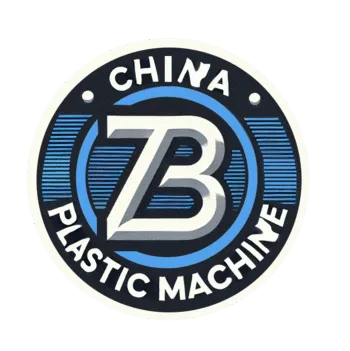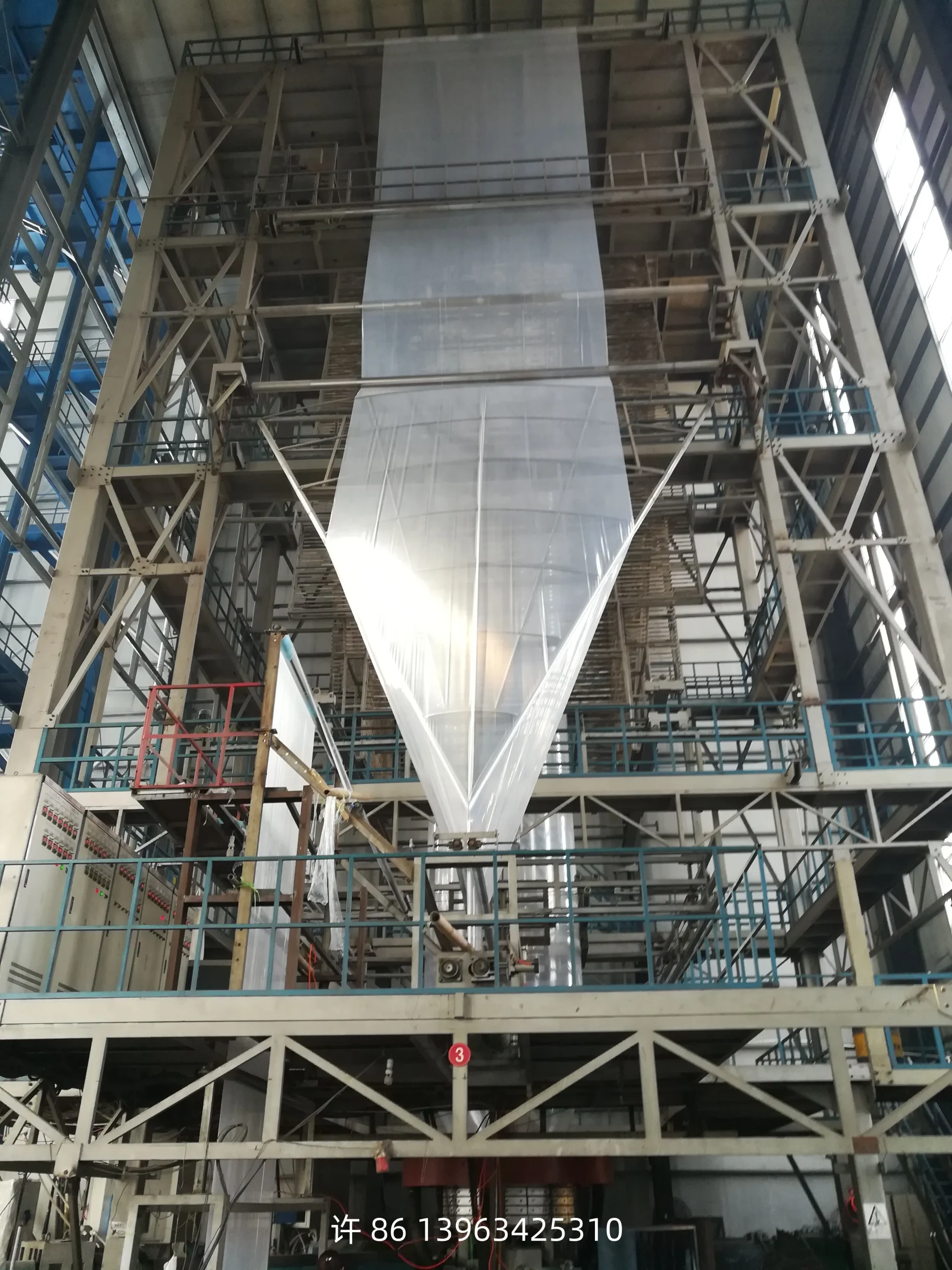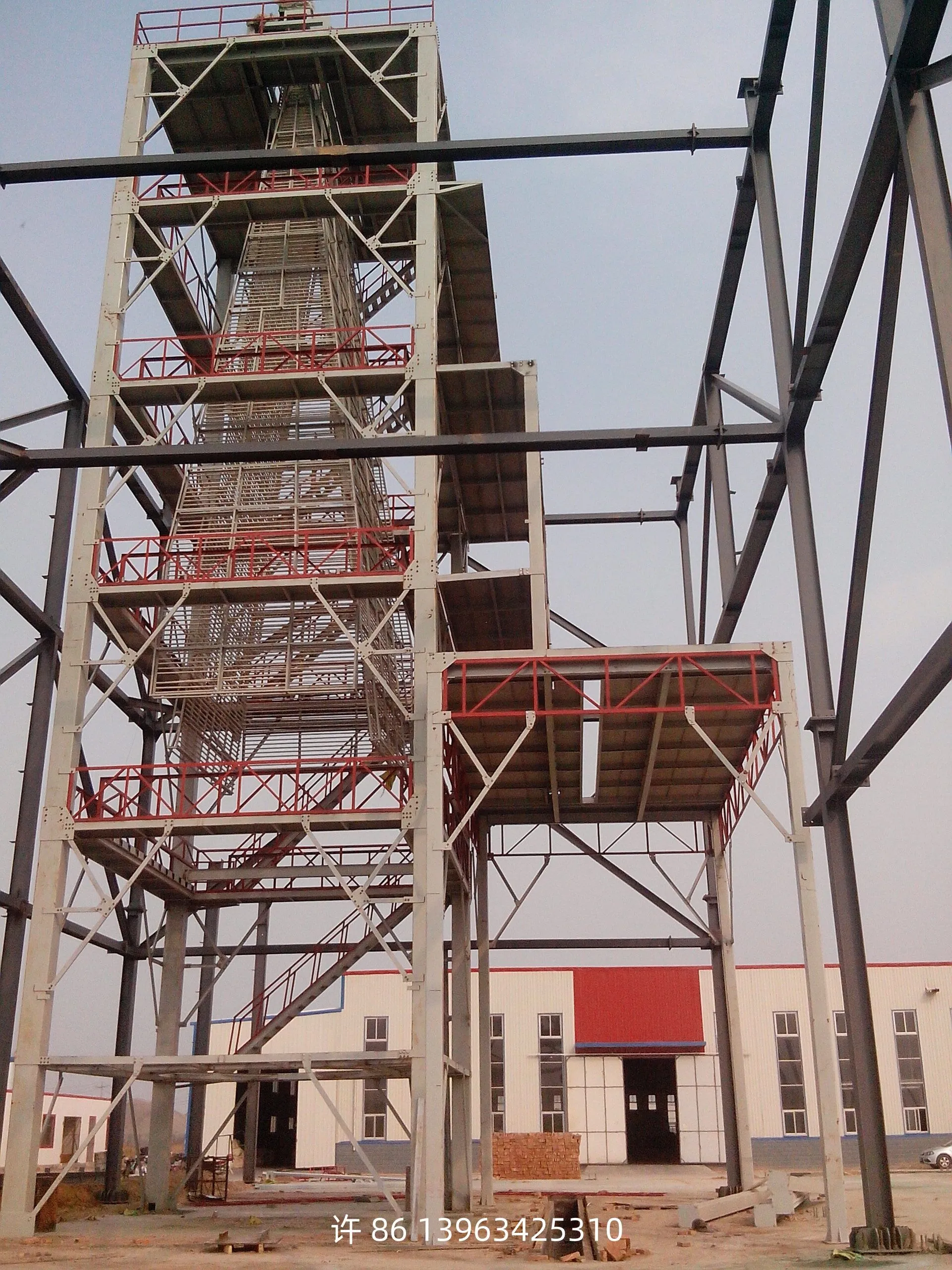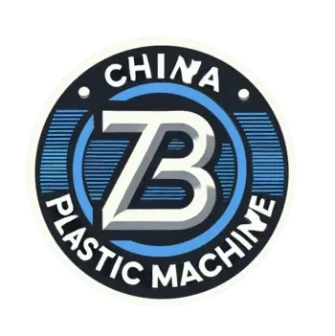- +86 139 6342 5310
- [email protected]
- 140 Wenhua South Road, Laiwu District, Jinan City, Shandong Province


If you are interested in cooperation, please contact us immediately, we will give you feedback as soon as possible!
The greenhouse film blow molding unit is specially built for the production of agricultural greenhouse films. It integrates advanced technology, has strong power, and all components are synergistic and efficient. It can accurately adapt different raw materials, flexibly adjust parameters, and quickly produce greenhouse films with puncture resistance, good light transmission and excellent heat preservation. It is easy to operate and maintain, and effectively guarantees the demand for agricultural membranes.
![]() Whatsapp : +8613963425310
Whatsapp : +8613963425310
![]() Email : [email protected]
Email : [email protected]
| Aspect | Details |
|---|---|
| Extrusion System | – Screw Configuration: Usually features a high-efficiency single-screw extruder. The screw design is optimized to efficiently convey, melt, and mix plastic resins. For greenhouse films, it can handle materials like polyethylene (PE), polyvinyl chloride (PVC), or ethylene-vinyl acetate (EVA). The screw rotates within a heated barrel, gradually raising the temperature of the raw material to the molten state. – Extrusion Capacity: Varies widely. Smaller units might have an extrusion rate of around 20 – 50 kg/hour, suitable for small local greenhouse producers, while larger industrial models can reach 100 – 300 kg/hour. |
| Die Head Design | – Shape and Structure: Employs a circular die head. This die is engineered to distribute the molten plastic evenly in a tubular shape, which is the basis for the greenhouse film. It has multiple channels and precise openings to ensure a consistent thickness across the film, crucial for uniform light transmission and durability. – Adjustability: Some die heads come with adjustable features, allowing operators to fine-tune the film’s thickness profile, enabling the production of custom films for different greenhouse applications. |
| Cooling Mechanisms | – Air Cooling: An air-ring is a standard component. It blows cool air onto the extruded tubular film, quickly solidifying the plastic. The air flow rate and direction can be adjusted to control the cooling rate, which affects the film’s mechanical properties. – Internal Cooling (Optional): Larger or more advanced units may incorporate internal cooling mandrels. This helps in faster production of thicker greenhouse films by cooling from both the inside and outside of the tube, improving dimensional stability. |
| Film Treatment and Additives | – UV Stabilization: Given that greenhouse films are exposed to sunlight for long periods, UV stabilizers are often added during production. These chemicals prevent the film from degrading rapidly due to ultraviolet radiation, extending its lifespan. – Anti-fogging Agents: To ensure clear light transmission, anti-fogging agents are incorporated. They prevent the formation of water droplets on the film’s inner surface, which could scatter light and reduce the amount of sunlight reaching the plants. |
| Traction and Winding | – Nip Rollers: After cooling, nip rollers are used to flatten the tubular film slightly and provide initial traction. They also help in removing any minor wrinkles or irregularities in the film. – Winding Unit: A powered winding unit rolls up the finished greenhouse film neatly. It can adjust the winding tension, ensuring that the film is tightly and evenly wound for easy storage and later use. |
| Control Systems | – PLC-based Control: A Programmable Logic Controller (PLC) is commonly installed. This allows operators to set and adjust key parameters such as extrusion temperature, cooling air volume, film thickness, and production speed. – Sensors: Multiple sensors are placed throughout the unit. Thickness sensors monitor the film’s thickness in real-time, while temperature sensors keep track of the extrusion and cooling temperatures. Feedback from these sensors enables automatic corrections to maintain film quality. |

Durable and damage-resistant: The blown greenhouse film has strong puncture and tear resistance, can withstand daily agricultural operations, strong winds, and hail impacts, is not easily damaged, has a long service life, and reduces frequent replacement costs.
High light transmission and heat preservation: It has excellent light transmittance, ensuring sufficient light for crop photosynthesis; at the same time, good thermal insulation can maintain the temperature stability in the shed and help crops grow in all seasons.
Anti-fog droplets: Some greenhouse films are treated by special processes, and the surface is not easy to form fog droplets, allowing sunlight to penetrate evenly to avoid water droplets falling and hurting seedlings, and can also reduce the humidity in the shed and reduce diseases.
2. Outstanding production efficiency
Efficient output: The components of the unit work smoothly together, with strong power, can maintain high-speed and stable blow molding, and quickly produce a large number of greenhouse films that meet specifications to meet the peak demand for films during the busy farming season.
Flexible regulation: It can precisely adjust the blowing ratio, traction speed, temperature and other parameters, and fabricate greenhouse films of different thicknesses and widths on demand, adapting to a variety of greenhouse sizes and planting plans.

It can be compatible with a variety of polyethylene raw materials, and can also process composite raw materials with additives such as anti-aging and dripping agents, fully exploiting the characteristics of raw materials and enriching the function of greenhouse membranes.
Easy to operate: Equipped with an intuitive human-machine interface, workers can easily get started, quickly set parameters, monitor the production process throughout the process, and reduce operating thresholds and training costs.
Convenient maintenance: key components are laid out rationally, there are sufficient maintenance channels, and commonly used parts are standardized, resulting in rapid maintenance and replacement, shortened downtime, and guaranteed production continuity.
The greenhouse film blow molding unit has a wide array of applications. In vegetable cultivation, it produces films that cover vast areas of tomato, cucumber, and lettuce greenhouses. These films let in ample sunlight while retaining heat, creating an ideal microclimate for rapid growth, and shielding crops from harsh weather. For flower nurseries, the unit churns out anti-fogging films. This ensures clear light transmission, preventing water droplets from blurring the light, so delicate blooms develop vibrantly. In small-scale hobby greenhouses, it enables cost-effective local film production. Meanwhile, large commercial farms rely on it to meet the high-volume demands, safeguarding thousands of plants and maximizing yields.
Our PVC pipe production line can adapt to a wide range of environmental conditions. The recommended working temperature is 0 – 40°C, and it can operate normally with a relative humidity not exceeding 85%. If your factory has special environmental conditions, we can provide targeted protection solutions, such as installing temperature control equipment and moisture-proof treatment, to ensure the stable operation of the equipment.
The core components of our equipment are designed in a standardized manner, and common accessories are well-stocked. For domestic customers, the goods can be delivered within 3 – 5 working days after the order is placed. For specially customized components, we will closely cooperate with suppliers to ensure delivery within 15 – 20 working days, minimizing the impact on your production.
Certainly! We not only provide equipment but also share our accumulated production process experience according to your product requirements. Our technical experts will formulate detailed production process plans combined with the characteristics of the equipment and provide on-site guidance and optimization during the equipment debugging stage to help you produce high-quality products.
Our drip irrigation pipe production line is equipped with a fully automatic control system, enabling a full – process automation from raw material feeding to finished product winding. Compared with traditional production lines, it can reduce labor input by 60%. For example, a production line with a daily output of 2 tons only requires 2 – 3 operators to complete the production, significantly reducing labor costs.
Of course! For customers who make bulk purchases or purchase multiple product categories, we will provide tiered discount offers based on the specific purchase amount and equipment type. At the same time, we will also give away a certain number of vulnerable parts and extend the equipment warranty period, making your purchase more cost-effective.
We have fully considered noise control in the equipment design. Through optimizing the mechanical structure and installing sound insulation devices, the running noise is lower than the national industrial noise standard (≤85 decibels during the day and ≤75 decibels at night). The equipment’s energy consumption, exhaust emissions, and other indicators meet environmental protection requirements and have passed relevant inspection and certification, so you can use it with confidence.
The overall warranty period for our plastic machinery is 1 year, and the warranty period for core components is 2 years. During the warranty period, all costs for repairs and component replacements due to equipment quality problems will be borne by us, and you do not need to pay any additional fees. After the warranty period expires, we will still provide preferential maintenance services and component prices.
We cooperate with multiple financial institutions and can provide flexible financing plans for customers, such as installment payments and equipment leasing. You can choose the down payment ratio and repayment period according to your own financial situation to ease financial pressure and smoothly introduce the equipment for production.

Customized plastic machinery experts help customers seize market opportunities with technological breakthroughs
Welcome to Z.B.Q.Y. Plastic Machine